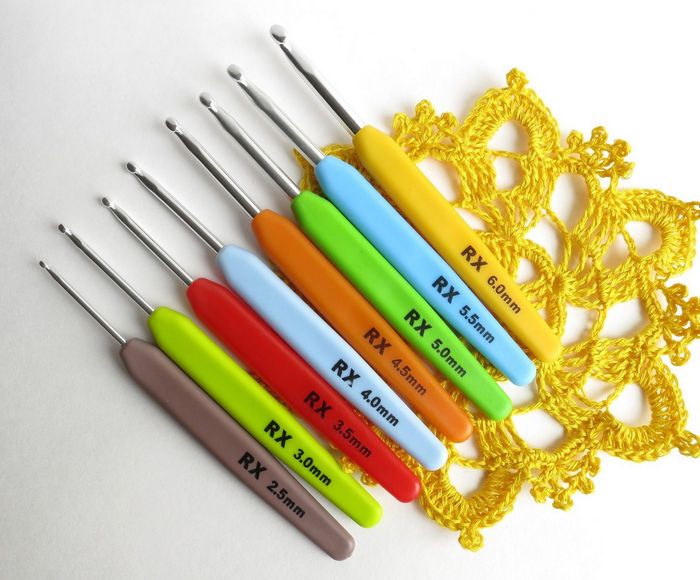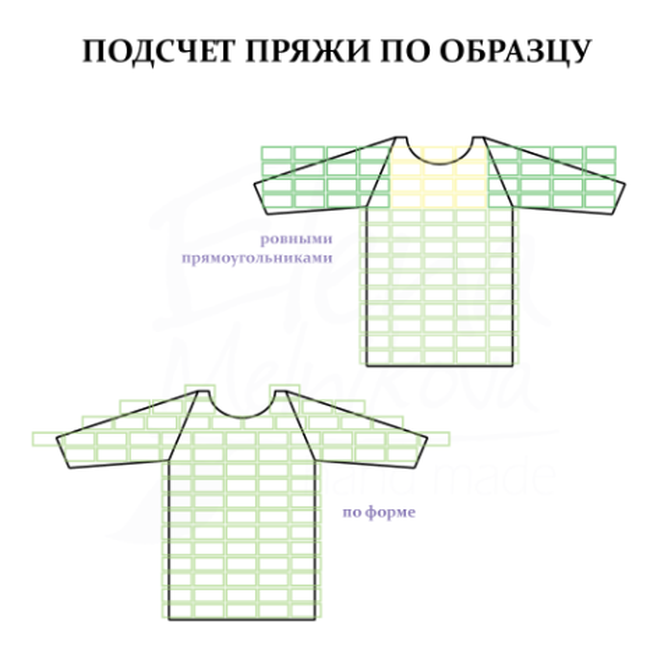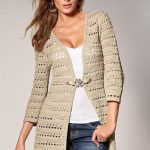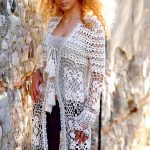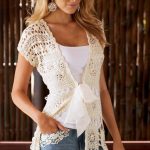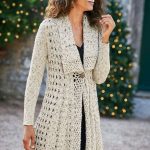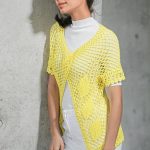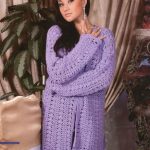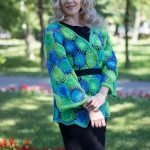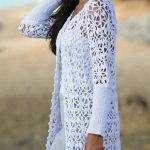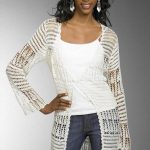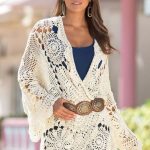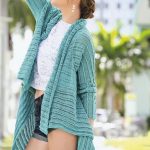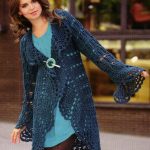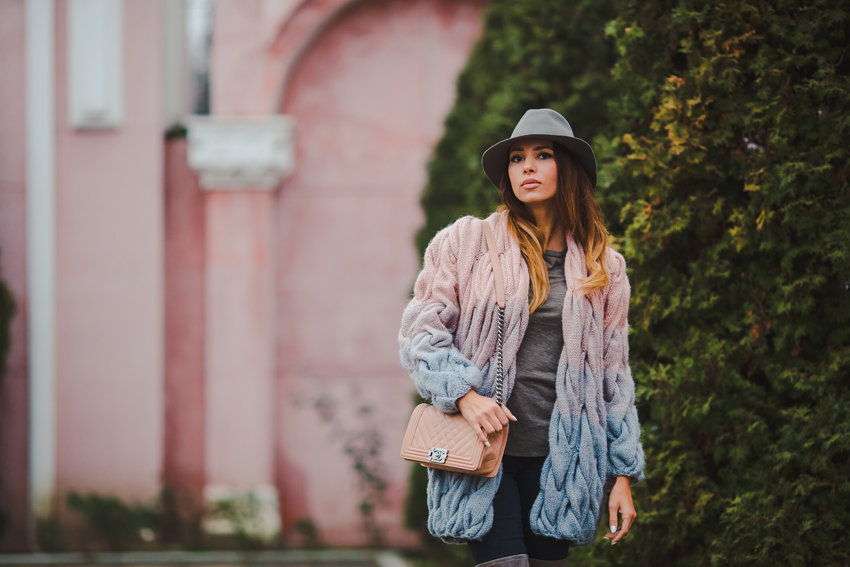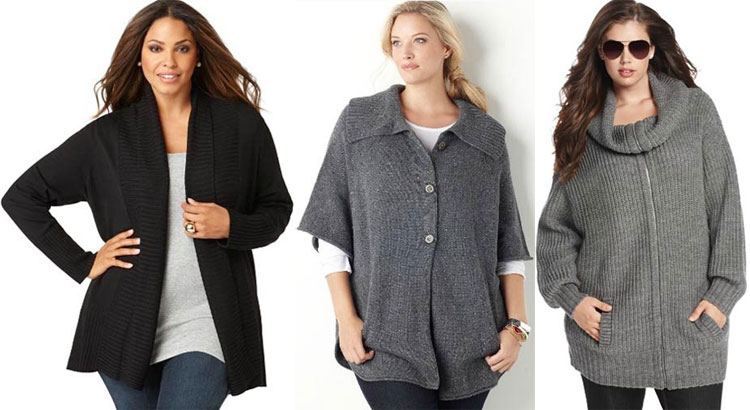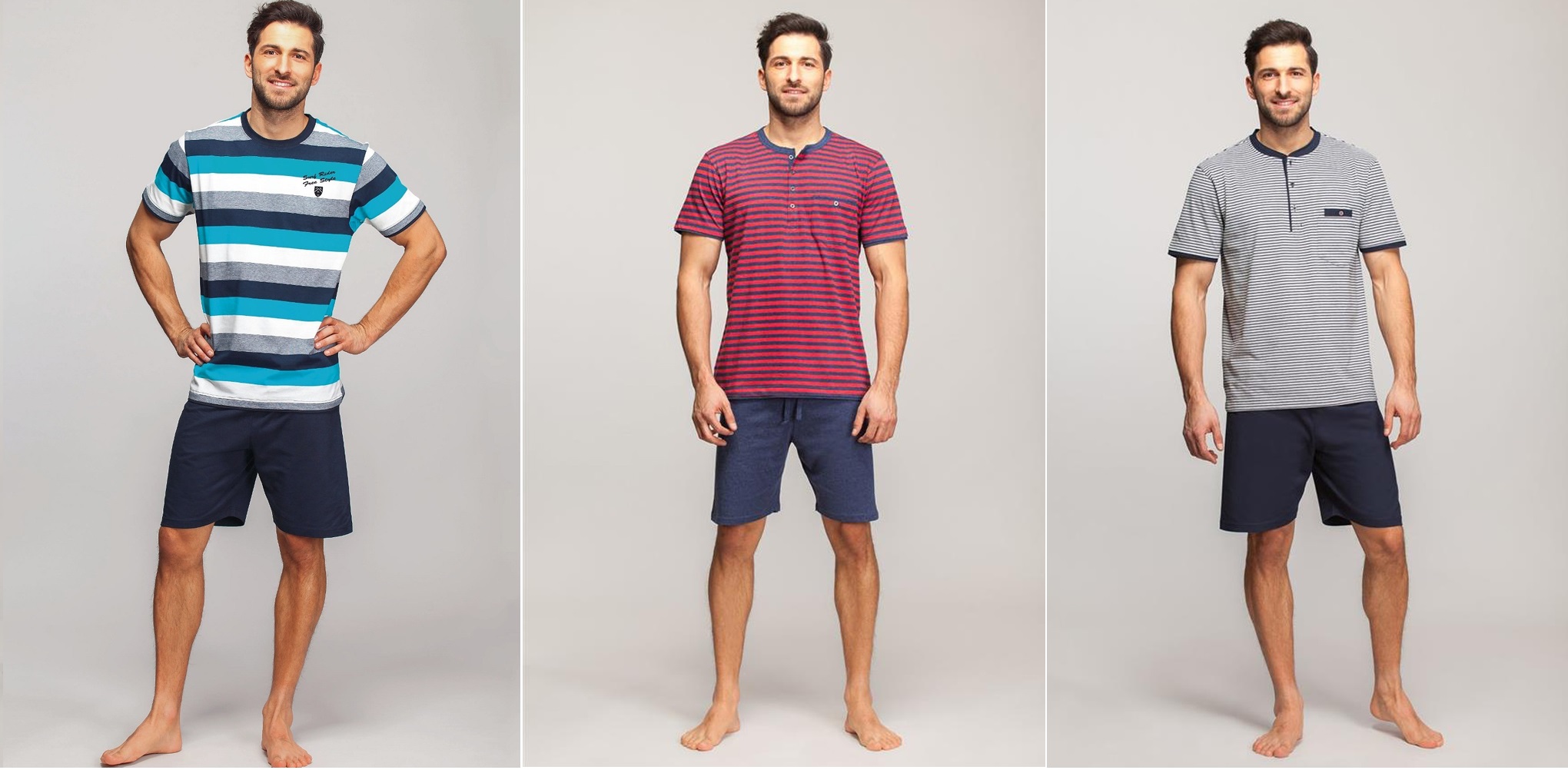A cardigan is a long sweater worn with jeans, trousers, and dresses. Initially, this item of clothing was a man's garment until it caught the attention of the unforgettable Coco Chanel. Thanks to the famous Frenchwoman, the cardigan also appeared in the women's wardrobe. Today, the product is constantly present in the collections of famous brands, and needlewomen are looking for options on how to create an original long sweater on their own. To crochet a cardigan, you need to prepare a pattern and material, correctly calculate its quantity, and choose the optimal technique. The article contains 4 popular knitting patterns for cold and warm seasons; for beginner craftswomen, they will be a good help in their work.
Materials and tools
To choose the right materials, you need to decide on the style, patterns, and season. For example, for autumn you need a warm model that would replace outerwear, and for cool summer evenings it is better to choose a white openwork cardigan. To create knitted items, such yarn as sheep and merino wool, mohair, angora, alpaca, silk, bamboo, cotton, flax are most often used. Each skein of thread has advantages and disadvantages that affect the choice.
| Yarn | Pros and cons, features of cardigans |
| Fleece | It comes in different thicknesses, no artificial components are added to it. It does not let heat out, absorbs moisture. A summer openwork cardigan of the "spider web" type is made from thin threads of small thickness, for large knit jackets, thick wool is chosen |
| Merino wool | The yarn is made from Australian merino wool. It is hygroscopic, with good thermal conductivity. The items can be machine washed on a special setting. The soft material does not cause irritation, it is used to create models from thick yarn, crochet cardigans for the winter |
| Mohair | Thin yarn made from goat wool is distinguished by its good strength. The material is often mixed with sheep wool or acrylic, and is used to create warm winter models or "spider webs" |
| Angora | Soft threads are made from the wool of Angora rabbits. The yarn is pleasant to the body, does not irritate the skin. The material is capricious in work, rabbit fluff in a skein wears out quickly. The finished warm cardigan should be worn only in dry weather, if caught in the rain, it can lose its presentable appearance |
| Alpaca | The material is made of llama wool, it does not form pellets. It retains heat well, is lightweight, silky, and uniform. Does not cause allergies. Warm yarn is used for crocheting cardigans from square motifs, using the "nuking" technique for spring and autumn |
| Silk | Expensive threads are obtained from the cocoon of the mulberry silkworm. The yarn is soft, thin, shiny, and is often used to knit summer cardigans |
| Cotton | A thin thread allows the skin to breathe. It has poor thermal conductivity, so it is used mainly for summer items. The material does not stretch much, acrylic or wool is added to the yarn to make it easier to work with. It is difficult to tear a thick thread, a cardigan made of cotton does not require special care |
| Bamboo | Strong, soft threads are made from bamboo. The material has antibacterial properties. From such yarn you can crochet a simple cardigan for the summer |
| Flax | The durable thread absorbs moisture, does not shed, does not fade over time. It has bactericidal properties. Most often, a summer cardigan is crocheted from linen yarn. |
Synthetic varieties of threads are also used: acrylic, viscose and nylon. These fibers resemble natural ones in some features, but their production eliminates such disadvantages as color loss and shrinkage after washing.
- Acrylic. An analogue of wool, which is easily dyed, does not fade, does not shrink, does not stretch when washed. It is used as an independent material or as an additive to natural yarn.
- Viscose. An artificial substitute for silk, which is distinguished by its strength and smoothness. Viscose absorbs moisture well and does not become electrified.
- Nylon. An elastic material that prevents shrinkage and rapid wear of clothing. It is most often used as an additive to natural fibers.
Manufacturers also produce mixed yarn - a mix of natural and synthetic fibers. Thanks to this combination, you can get a durable material that does not retain moisture, is breathable, and has a number of other positive properties. One example is semi-wool, a combination of wool and cotton. The yarn is soft, durable, smooth, and suitable for making openwork crochet cardigans for women and children.
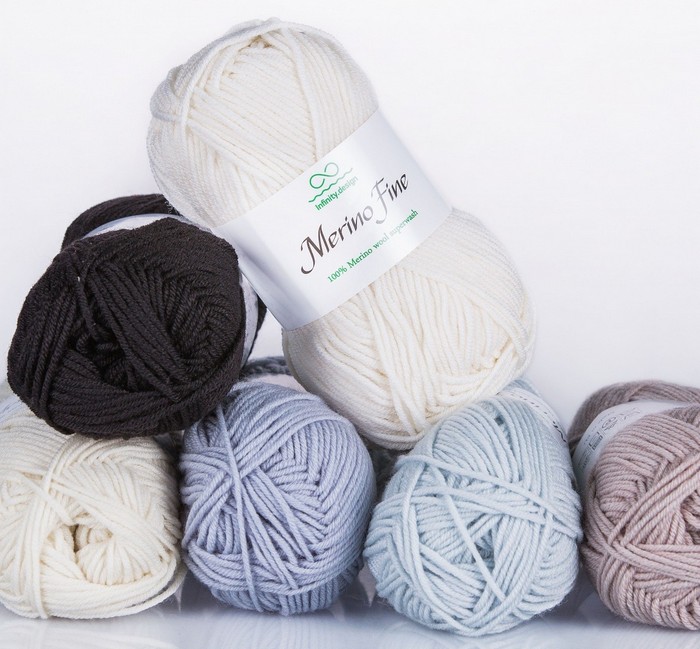

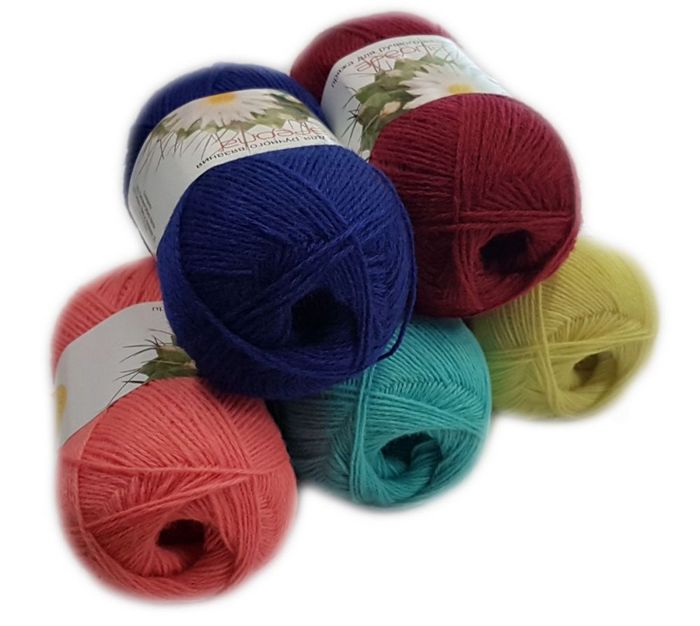
After choosing the material, they move on to the tools. The thickness of the hook must correspond to the diameter of the thread, which is indicated by the number on the tool.
To obtain a tightly knitted product, choose a hook one size smaller.
When the yarn, hook, patterns are selected, a suitable pattern is found, the diagrams and descriptions of the models are studied, you need to estimate how many skeins of thread will be needed for the work. This parameter depends on the thickness of the tool, the individual characteristics of the knitting technique of the craftswoman, the size of the product.
First method:
- Knit a sample. The larger its dimensions, the more accurately you can calculate the yarn consumption. As a rule, knit a 20 x 20 cm square.
- We wash and iron the finished fabric.
- Using a ruler or tape measure, measure the length and height of the sample.
- We draw out the pattern into squares according to the sample dimensions.
- Calculate the number of squares. It is necessary to take into account the features of the pattern: for cardigan sleeves, the number of parts is multiplied by 2.
- We mark the first and last loops of the sample.
- We unravel the sample and measure the length of the thread.
- Multiply the resulting number by the number of squares. At this stage, it will be clear how many meters of yarn will be needed.
- We count the number of skeins. To do this, we need to divide the resulting number by the amount of thread in one skein.
An easier way to determine the amount of yarn is to use an online calculator, which is offered on any major thematic resource.

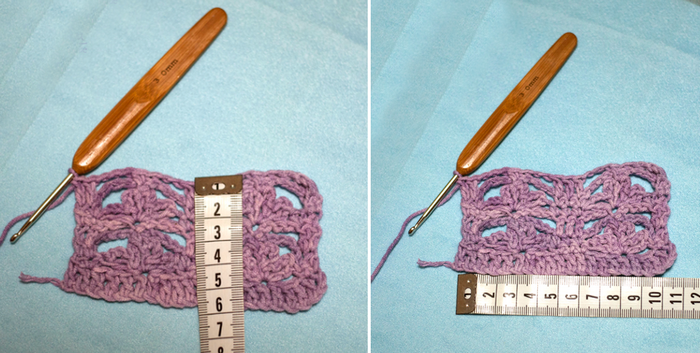

Measurements and pattern preparation
To crochet a cardigan, you need to take the following measurements:
- Chest circumference. The tape runs parallel to the floor at the highest points of the chest.
- Neck circumference. The measuring device is placed along the base of the neck.
- Length of the product. Measure the distance along the back from the highest point of the body to the desired length.
- Sleeve length. The tape runs from the shoulder joint, through the elbow and to the wrist.
- Hip volume. Measured parallel to the floor at the protruding points.
After taking measurements, you need to compare them with the pattern sizes. You will need to find the values of the half-girth of the chest and hips, multiply by 2, and then compare with the measurements. If these units match, nothing needs to be adjusted. Otherwise, you will have to "push" the pattern apart in certain areas. The difference between the pattern values and the measurements is recorded, and then special horizontal lines are used along which it is evenly distributed.
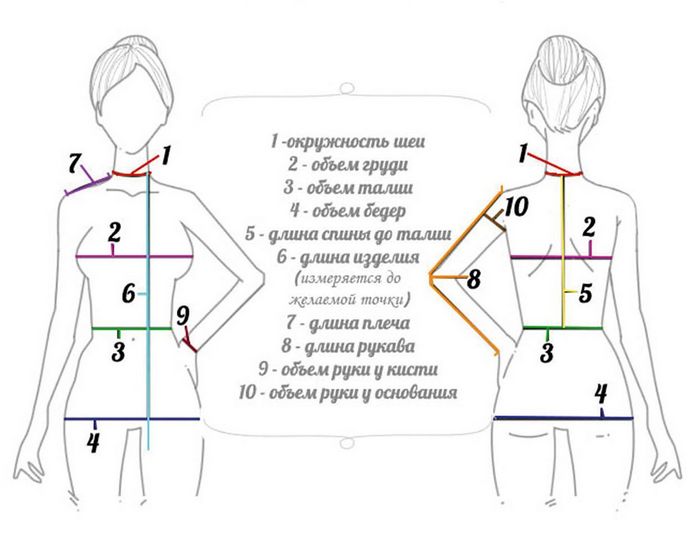

Choosing a knitting technique
A suitable pattern can be selected based on the visual component, complexity of execution, and knitting experience. The fillet technique is suitable for beginners who are just beginning to explore the world of yarn and hooks, and nuking can be safely chosen by experienced craftsmen.
| Knitting technique | Description |
| Fillet | An easy method, consisting of columns and air loops. It is necessary to create a grid with empty and filled cells with a pattern. This technique is similar to cross stitching. The cells can be made in the form of squares, diamonds, hexagons or complex connections of several figures. |
| Motives | The main thing in the continuous crochet technique is to draw the arrangement of the patterns on the diagram and divide it into rows. A cardigan made of motifs is created with different patterns, these can be flowers, circles, squares, hexagons |
| Openwork | Suitable for knitting thin cardigans designed for warm weather. Patterns for creating an openwork product: "arches", "hearts", "honeycombs", "fans", "lark's feet" |
| "Shell" | Suitable for weaving winter knitted cardigans with a crochet hook. From one loop, several columns with or without yarns are knitted, a voluminous fabric is obtained, the density of which can be adjusted due to air loops |
| "Bumps" | This crochet pattern is created from unfinished double crochets. The appearance depends on the number of columns, the size and frequency of repetitions of the element. To knit exquisite cardigans, jackets or sweaters, you can focus entirely on this technique or just complement the product with voluminous elements. |
| Nuking | Nuking combines the features of classic crochet and knitting, as well as the Tunisian technique. A special tool with an "eye" at the end will come in handy. A thread is threaded through the hole, and a number of air loops are collected with a hook. Loops are added to the resulting braid, as in the Tunisian technique, then the spare thread is used to secure the already knitted part, and the tool itself is used as a knitting needle. Any crochet pattern for a cardigan can be knitted in this way |
After choosing the technique, the most interesting part begins – the knitting process itself. Thematic resources contain all sorts of fashionable crochet cardigans with patterns, descriptions, and step-by-step instructions. We also offer ready-made patterns that can be adapted to your parameters and chosen knitting method.

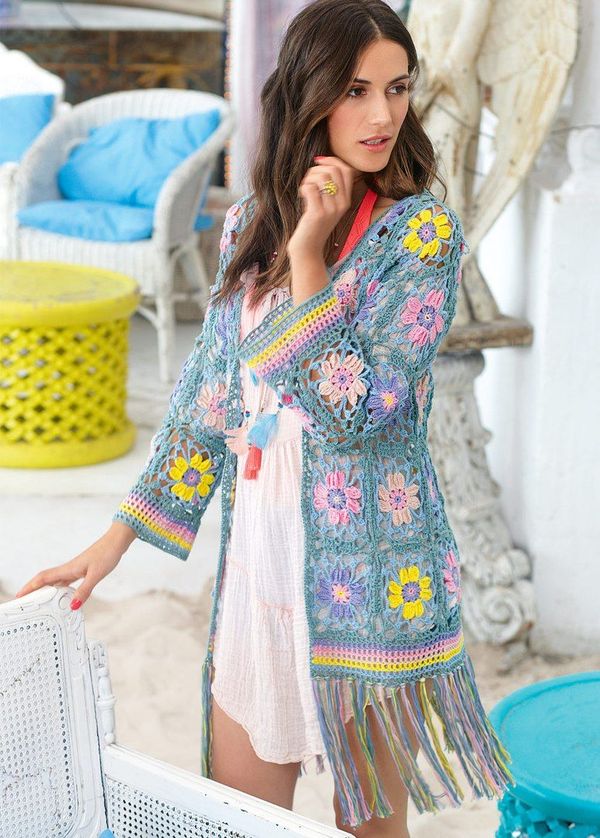
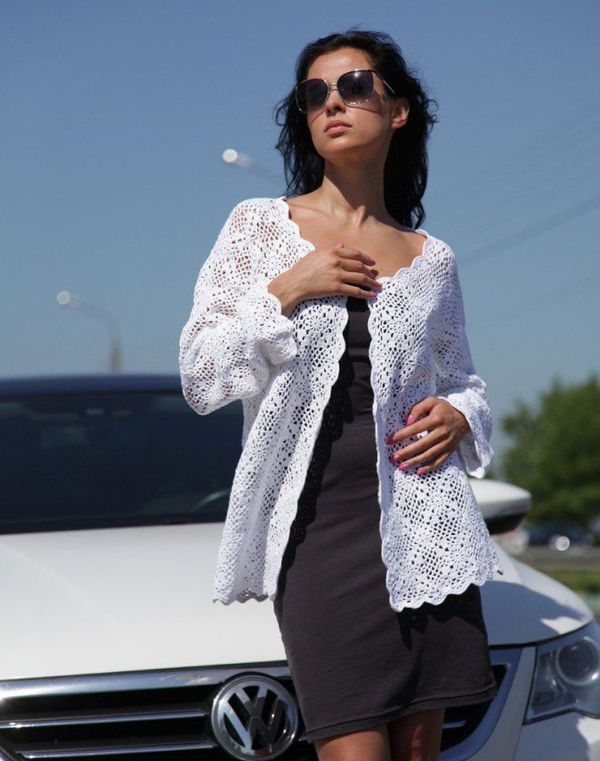


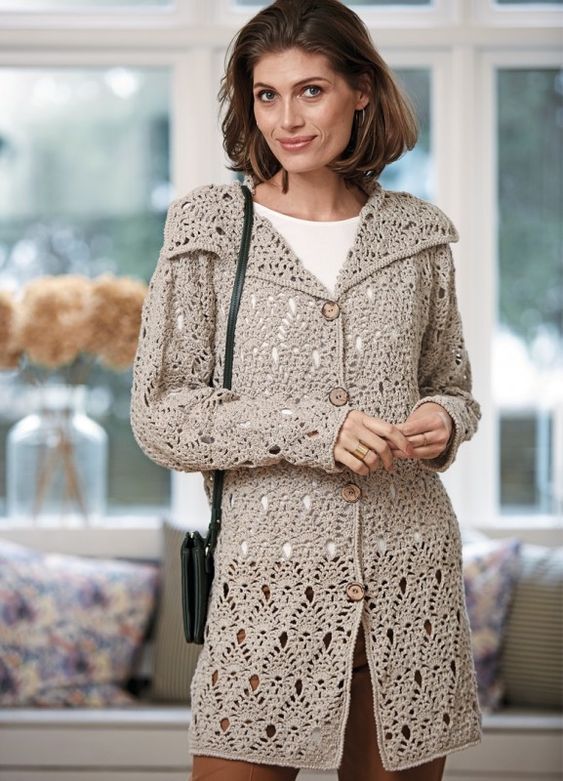
Stages of work
This section contains crocheted cardigans, the patterns are not too complicated, both a beginner and an experienced craftsman will be able to understand them. Light summer models and warm options are offered, made in different techniques. You can knit a long women's cardigan or a shortened model for a teenage girl - the choice is limited only by the imagination of the craftswoman. Both mixed and natural yarn are used for work.
Summer cardigan with floral motifs
The cardigan will fit sizes 44–52. First, you will need to knit the motifs themselves according to the pattern, without tearing the thread. After the fifth row, when the shelves and back are formed, you need to separate the parts. For the neck, knit the halves of the motifs. Connect the patterns on the shoulders. Knit the motifs to the end of the part, complement the halves that were made earlier. Align the edges of the shelves with chains of 7 air loops.
For the sleeves, knit the motifs and connect them together. Similarly to the main part, align the borders, connect the parts. Then tie the edges of the product with a border, add a pattern to the edge of the neck, shelves and sleeves.
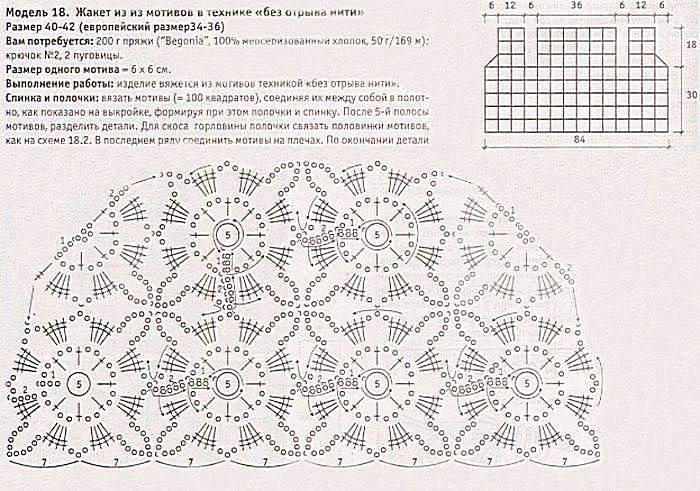

Warm oversized model
This beautiful crochet cardigan is also suitable for plus size women. The loose model is knitted in one piece using a 3.5 mm hook. Work order:
- We cast on 84 air loops (AL).
- Next - 84 double crochets (DC) + 5 rows (back wall). Together with the edge row you will get 6 rows.
- We throw on another 84 VP + 12 rows. Fasten the thread.
- For the sleeve: put a mark in the middle, find the edges of the product on both sides. Knit 60 CH.
Explanations for decreases on sleeves: each time decrease the number of dc by 2:
- Decrease + 56 dc + decrease.
- 58 CH x 2.
- 2 dc + decrease + 50 dc + decrease + 2 dc.
- 56 CH.
- 2 dc + decrease + 48 dc + decrease + 2 dc.
- 54 CH.
We finish knitting like this: 2 CH + decrease + 30 CH + decrease + 2 CH. Then 36 CH x 5. We knit the second shelf according to the example, taking into account the features of the pattern. When both halves are ready, we connect them together and sew them. We tie the shelf and the neck with simple double crochets.

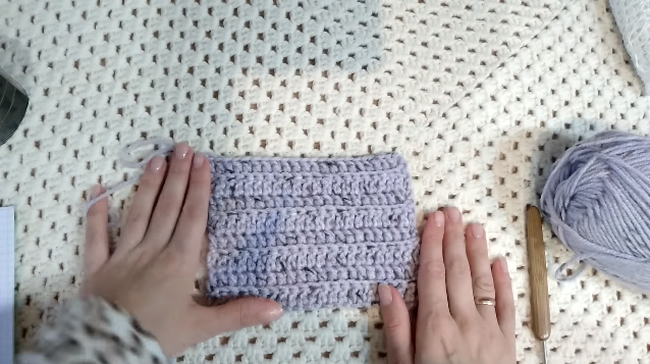

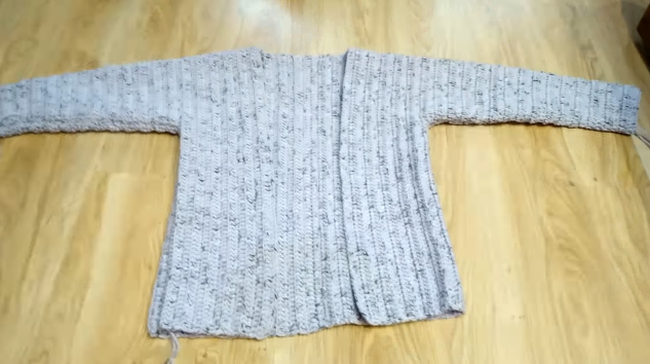


Openwork cocoon
A simple example of a crochet cardigan for beginners:
- Knit VP. Length of the first row = sleeve length X 2 + back width.
- The rectangle is knitted until its dimensions “catch up” with the planned length of the product.
- The resulting part is steamed, folded along the long side, and the short ones are sewn from the edges to the fold.
- The open edges are tied with single crochets or a more interesting pattern.
To knit an openwork cocoon, it is not necessary to use a pattern. The main thing is to take measurements correctly and take into account all the dimensions of the product in the work.
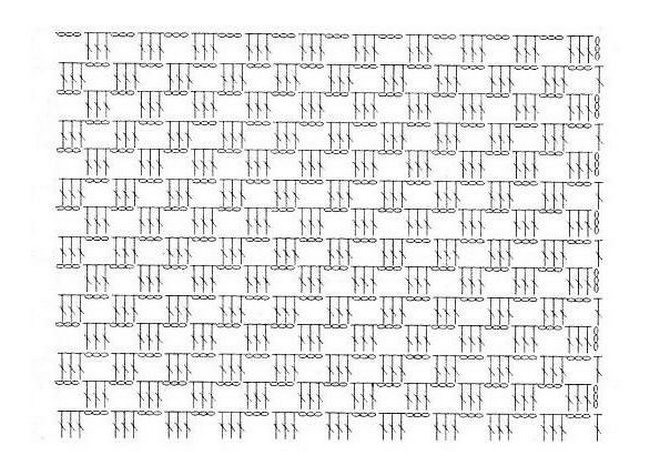
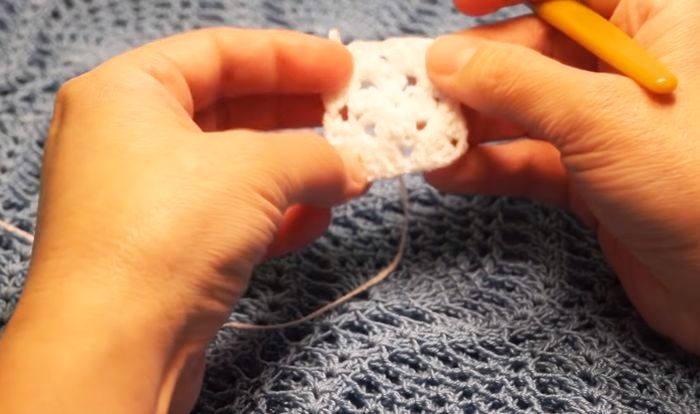
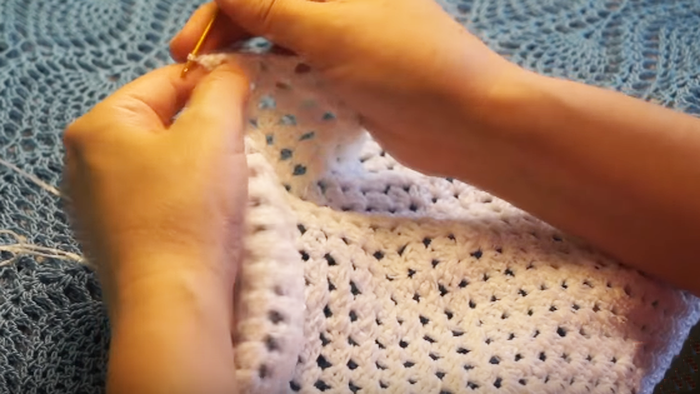
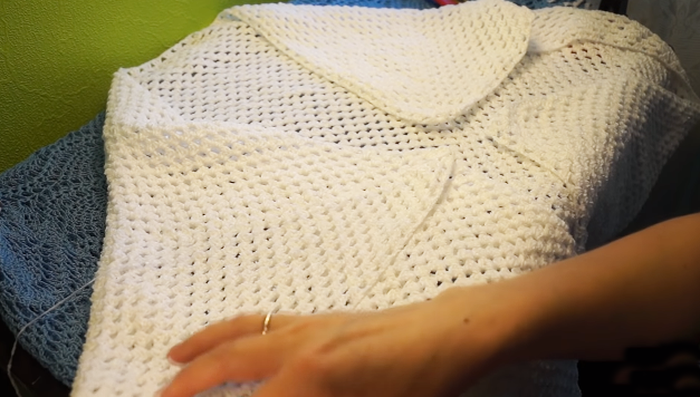

Kimono cardigan
To make an original model in Japanese style, use summer mixed yarn. Explanation of the pattern: number of loops - 8 + 3. Repeat starts with the 4th row, then the 3rd and 4th.
Crochet step by step:
- Cast on 131–147 VP. Knit a pattern of 8 loops 16–18 times per row.
- After 46–48 cm, knit rows 31–43. Fasten the thread.
- Cast on 48 VP. With 3 VP, knit the 4th row according to the pattern, cast on 48 loops for the second sleeve.
- Knit the front row according to the pattern on all loops: 3rd row on the back, 1st row on the sleeves. In the back row - 4th row on all loops. After 72 cm there will be 65 rows. Fasten the thread.
- For the right shelf, you need to dial 43-51 VP. Recreate the pattern of 8 loops 5-6 times per row. After 46-48 cm, knit 31-43 rows. Fasten the thread.
- Cast on 48 VP. With 3 VP, knit the 4th row according to the pattern, you will get 91–99 loops.
- Complete step 5. The left and right shelves should be symmetrical.
- Sew shoulder and side seams, sleeves.
- Work 6 rows of single crochet stitches (SC) along the bottom of the garment and cuffs.
- For the shelves and collar, knit SC: 1 loop in each on the bottom bar, 2 loops to the pattern rows, 1 loop to the back. Total number of rows - 6.
A thing created with your own hands should not even be compared with clothes from the mass market. This is a unique, stylish product that will definitely attract attention and decorate the owner in any situation. Among other things, a knitted cardigan can be a great original gift: it can be given as a birthday present to a friend, mother, daughter, or granddaughter.
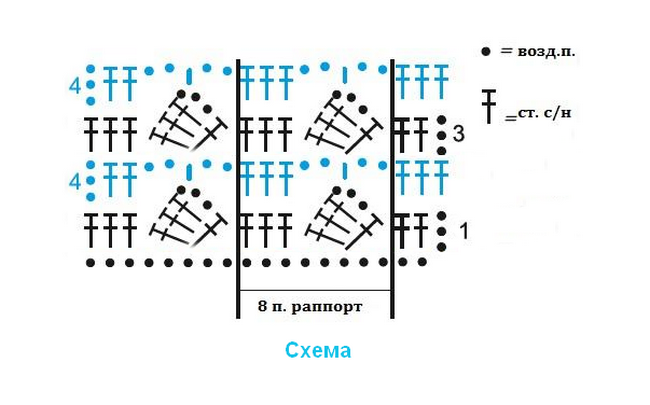

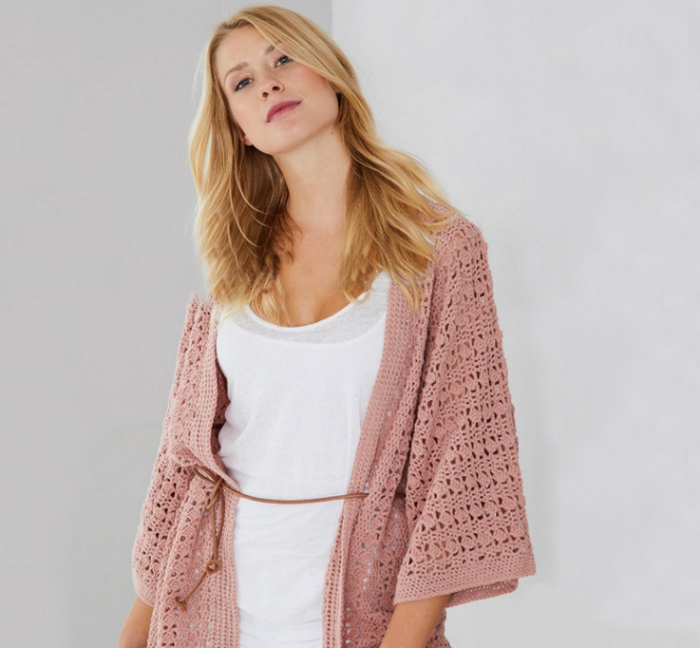
Video


